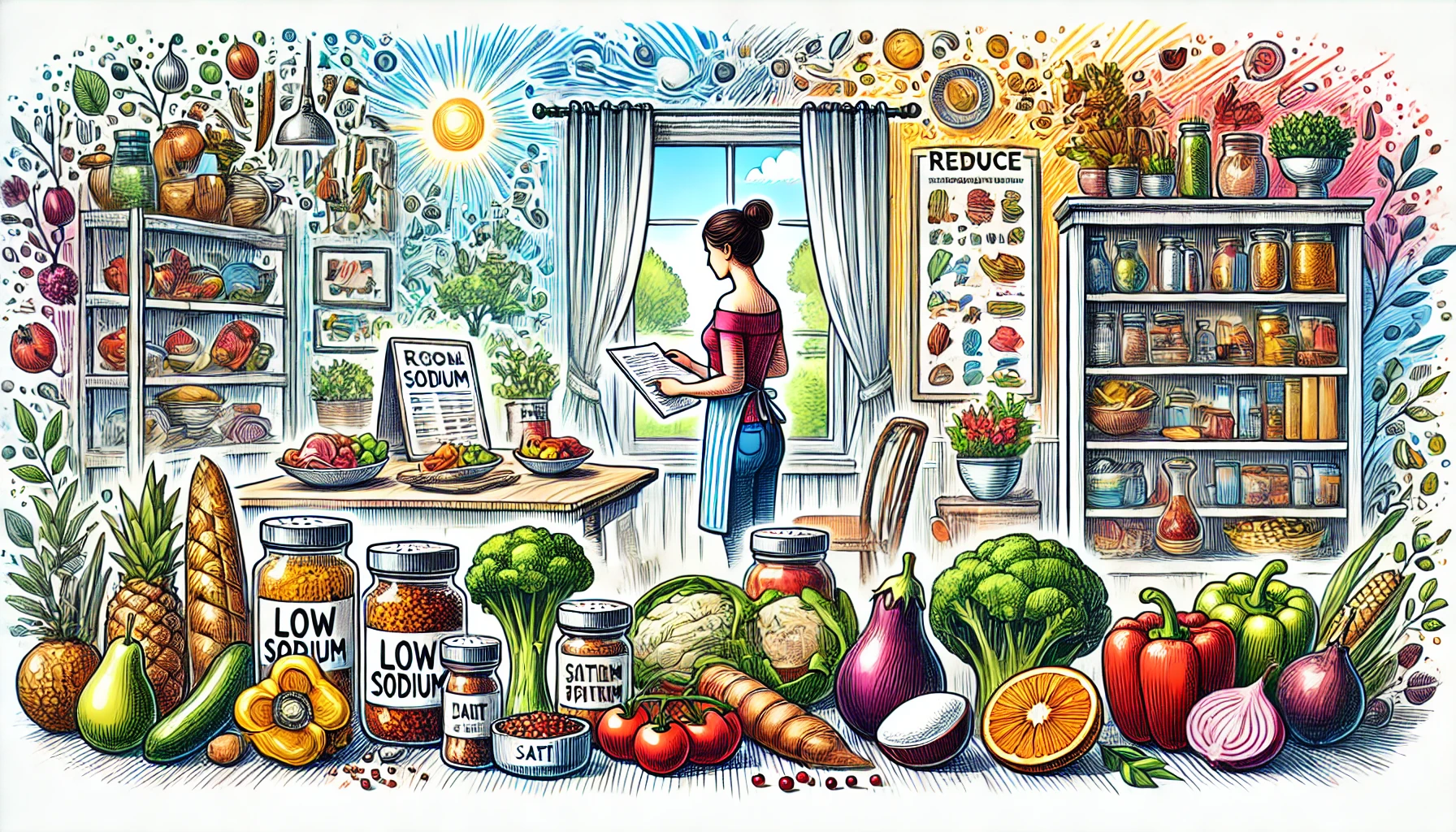High sodium intake is a major contributor to high blood pressure, or hypertension, which increases the risk of heart disease, stroke, and kidney disease. By reducing sodium in your diet, you can significantly improve blood pressure control and overall cardiovascular health. This guide provides practical tips and strategies to help you lower your sodium intake and enjoy a heart-healthy lifestyle.
1. Understand Sodium Recommendations
- Daily Limit: Aim for less than 2,300 mg of sodium per day, with an ideal limit of 1,500 mg for most adults, especially those with high blood pressure.
- Food Labels: Learn to read food labels to understand the sodium content in foods. Look for terms like “sodium-free,” “low sodium,” “reduced sodium,” and “unsalted.”
2. Read Nutrition Labels
- Serving Size: Check the serving size and the number of servings per container to accurately calculate sodium intake.
- Percent Daily Value (%DV): Look for foods with 5% DV or less per serving for low sodium. Foods with 20% DV or more per serving are high in sodium.
- Ingredients List: Sodium can be listed as salt, sodium benzoate, sodium nitrite, and monosodium glutamate (MSG), among others. Avoid foods with multiple sodium-containing ingredients.
3. Cook at Home
- Control: Cooking at home allows you to control the amount of salt added to your food.
- Fresh Ingredients: Use fresh ingredients like fruits, vegetables, lean meats, and whole grains instead of processed foods.
- Homemade Alternatives: Make homemade versions of soups, sauces, and dressings to reduce sodium content.
4. Use Herbs and Spices
- Flavor Boosters: Use herbs, spices, garlic, lemon juice, vinegar, and salt-free seasoning blends to add flavor without sodium.
- Experiment: Experiment with different herbs and spices to find combinations that enhance your dishes.
5. Limit Processed and Packaged Foods
- High Sodium: Processed and packaged foods, such as canned soups, frozen meals, deli meats, and snack foods, are often high in sodium.
- Fresh Choices: Choose fresh or frozen fruits and vegetables, lean meats, and whole grains instead.
- Rinsing: Rinse canned foods, such as beans and vegetables, to reduce sodium content.
6. Choose Low-Sodium Alternatives
- Product Labels: Look for low-sodium or no-salt-added versions of your favorite foods.
- Brands: Compare different brands and choose those with lower sodium content.
- Substitutes: Use salt substitutes sparingly, as some may contain potassium chloride, which can be harmful in large amounts for certain individuals.
7. Be Cautious with Condiments and Sauces
- High-Sodium Condiments: Condiments like soy sauce, ketchup, mustard, and salad dressings can be high in sodium.
- Low-Sodium Options: Choose low-sodium or no-salt-added versions of condiments and sauces.
- Homemade Dressings: Make your own dressings and sauces using fresh ingredients and herbs.
8. Eat Out Wisely
- Menu Choices: Choose restaurants that offer low-sodium menu options or allow you to customize your meal.
- Request Modifications: Ask for your meal to be prepared without added salt and request sauces and dressings on the side.
- Portion Control: Be mindful of portion sizes, as restaurant portions are often larger and higher in sodium.
9. Gradually Reduce Salt
- Adjusting Taste Buds: Gradually reduce the amount of salt in your diet to allow your taste buds to adjust.
- Weaning Off: Start by reducing salt in recipes and at the table, and then continue to decrease it over time.
10. Stay Hydrated
- Water Intake: Drink plenty of water to help your body balance sodium levels and flush out excess sodium.
- Healthy Beverages: Choose water, herbal teas, and other low-sodium beverages over sugary or high-sodium drinks.
Sample Low-Sodium Meal Plan
Breakfast
- Oatmeal: Made with water or low-fat milk, topped with fresh fruit and a sprinkle of cinnamon.
- Smoothie: Blend spinach, banana, unsweetened almond milk, and a tablespoon of chia seeds.
Lunch
- Salad: Mixed greens with cherry tomatoes, cucumber, bell peppers, avocado, and a homemade olive oil and vinegar dressing.
- Grilled Chicken: Seasoned with herbs and lemon juice, served with quinoa and steamed broccoli.
Dinner
- Baked Salmon: Seasoned with dill, lemon, and garlic, served with brown rice and roasted asparagus.
- Vegetable Stir-Fry: Mixed vegetables stir-fried in a small amount of low-sodium soy sauce, served over whole-grain noodles.
Snacks
- Fresh Fruit: Apple slices with a small handful of unsalted almonds.
- Veggie Sticks: Carrot and celery sticks with hummus.
Tips for Success
- Planning: Plan your meals and snacks ahead of time to ensure they are low in sodium.
- Batch Cooking: Prepare and freeze low-sodium meals in advance for convenience.
- Education: Educate yourself and your family about the benefits of a low-sodium diet and how to make healthier choices.
- Support: Seek support from healthcare providers, nutritionists, or support groups to stay motivated and on track.
Reducing sodium intake is a key step in managing and lowering blood pressure. By making informed choices, cooking at home, and gradually reducing your salt consumption, you can take control of your heart health. Incorporate these strategies into your daily routine to enjoy the benefits of lower blood pressure and improved overall well-being.

